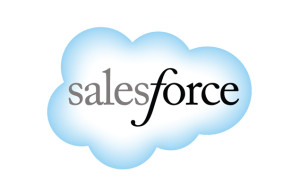Introduction
The way the history of Salesforce begins is that Marc Benioff was surfing on the sea just off Big Island in his beloved Hawaii during a vacation when he thought: why can’t buying software should be as simple as Amazon is for customer goods? This line of thinking eventually led to Benioff and a team of developers pioneering software-as-a-service (SaaS) model by delivering its customer relationship management (CRM) software over the internet on a per seat, per month payment plan, instead of deployed on-premise servers under a hefty licensing agreement. As outlined in ‘Behind The Cloud’, a book by Benioff: “I started Salesforce.com in a rented flat in 1999 with the aim of making business software as simple to use as a website like Amazon.com.”
A Brief timeline of Salesforce:
How Salesforce.com was founded
Benioff proved himself to be something of wunderkind throughout his time at enterprise technology behemoth Oracle, where he was promoted to vice president at the age of only 23. Benioff founded Salesforce in March 1999, with the help of three software developers from Left Coast Consulting: Parker Harris, Dave Moellenhoff, and Frank Dominguez. As outlined in the book ‘Behind The Cloud’, the idea was to “make software easier to buy, more simple to use, and more democratic without the complexities of installation, maintenance and constant upgrades”. Salesforce customers currently get new features delivered to them via the web three times a year. The company soon went public in June 2004 under the stock symbol CRM and raised $110 million in total. Oracle founder Larry Ellison was an early investor and like a mentor to Benioff.
Building the platform
Salesforce went on to launch a variety of products aside from its standard CRM software, which is branded for various verticals – Sales Cloud, Marketing Cloud, Community Cloud, Service Cloud and Commerce Cloud – all billed on the basis of subscription. The company soon expanded into platform-as-a-service (PaaS) for developers to create apps on Salesforce – App Cloud – before tying them all together under the ‘Customer Success Platform’ in October 2014. Salesforce soon started adding new aptitudes into its platform, primarily through acquisitions, starting with the 2010 acquisition of PaaS company Heroku. Then came the somewhat unexpected 2016 acquisition of Quip, that placed Salesforce into the workplace collaboration market. Then the purchase of MetaMind, the same year, eventually led to the release of Salesforce Einstein, a broad range of AI features baked into the Salesforce platform. Most recently Salesforce bought MuleSoft in 2018 and launched Integration Cloud as a conclusion.
Finances
The hire of Keith Block to become COO, after his firing from Oracle in 2013, has proved to be somewhat pivotal to Salesforce’s ongoing growth. Benioff addressed the executive at the time in enterprise software history as “the best sales executive”. Block has driven more vertical-specific solutions, made in-roads into lucrative enterprise customers and has helped push the company towards its long-term goal of a $10 billion run rate, which it hit in 2017. Salesforce proclaimed in its Q2 2018 financial results that it had surpassed the $10 billion run rate figure, with Benioff saying at the time: “We had a remarkable quarter of success, striking a huge milestone for the company, becoming the first enterprise cloud software firm to break the $10 billion revenue run rate.” Benioff quickly moved on though, telling CNBC that he was already eyeing a $20 billion run rate. During an interview on CNBC’s Money, Matters Benioff said: “We are on the fast lane to $20 billion, and that is all that is on my mind right now, how fast we can get to 20. I have never been more thrilled about getting to 20, because 10 is behind me, and you always need to be watching to the future.”
Real estate
As its balance sheet has grown Salesforce has also grown a sizeable, and well-branded, global real estate footprint. The top gem for the company is the newly opened Salesforce Tower in Downtown San Francisco, which is the second tallest building in America west of the Mississippi. Benioff wrote in his book ‘Behind The Cloud’ that Salesforce would forever be based in his native San Francisco. Salesforce also has naming rights for a high-rise building in London at 110 Bishopsgate. The organisation has more than 50 global offices to date.
Events
Benioff has always been a big supporter of events as a promoting channel. Salesforce ran its very first convention – Dreamforce – in San Francisco back in 2003, with merely over 1,000 attendees. It upgraded to the Moscone Centre in 2005 and nowadays it takes over downtown San Francisco, with 171,000 registered attendees. The Dreamforce concert, Dreamfest, has also become traditional, with bands like The Foo Fighters and The Killers finishing the event, and even Bono performing to a packed Cow Palace and going off on a trademark rant back in 2016.




